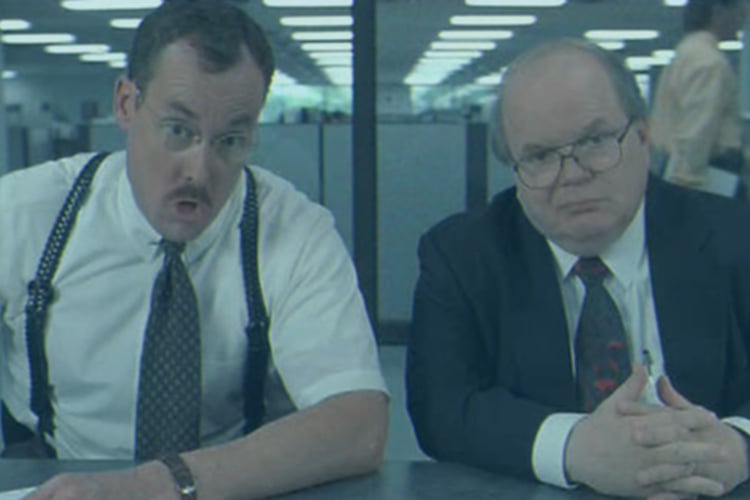
The Importance of Role Clarity in an Organization
If you’ve ever seen Office Space (and let’s face it, who hasn’t?), you probably remember the iconic scene where a pair of consultants ask the protagonist, Peter Gibbons, "What would you say… you do here?" His response - like that of so many employees in roles that lack clarity - is a mix of confusion and frustration. This memorable line has since become a timeless reflection of how disjointed job roles can leave workers, well, not exactly sure what they’re supposed to be doing.
This seemingly simple question highlights a critical workplace issue: role clarity. When employees are unsure about their responsibilities, or when roles are vaguely defined, productivity and morale take a major hit. In this blog, let’s explore why role clarity is essential for organizational success and how businesses can avoid the dreaded "What would you say...you do here?" moment.
The Problem: A Lack of Clarity Leads to Confusion and Frustration
In Office Space, Peter’s frustration with his undefined role mirrors a very real problem many people face in the workplace: understanding the expectations of their position. This kind of role ambiguity can leave employees feeling unmotivated, disconnected from their work, and, worse, expendable. When roles lack clarity, people often don’t know where to focus their energy, what metrics to strive toward, or how their success is measured. The result? Reduced productivity and growing disengagement.
While the speed with which technology influences how we accomplish our work, the real lack of role clarity is more human in nature. Traditional management constructs and engagement models no longer foster the environment and motivation for employees to deliver the most brilliant outcomes. Telling employees what to do and how to do it stifles innovation and doesn’t capitalize on the unique qualities that made us hire them in the first place. This isn’t to say that leadership lacks understanding of what needs to be done; rather, it’s a call for leaders to actively collaborate with teams to shape roles that are meaningful, empowering, and aligned with the organization’s highest priorities. You can have the most compelling and mouth-watering vision, but if the people in your organization can't see where they fit within it, the vision will be dead on arrival.
As a consultant, I continually work with clients who live in a world of gray areas, where roles are undefined, goals need to be clarified, and motivation is hard to come by. Employees muddle through their days, trying to avoid being noticed or asked about their purpose – because frankly, they're unsure of it themselves. Even though my primary objective is to improve business agility, these challenges transcend industry, discipline, framework, or culture. To address them, we developed a Role Clarity Workshop that brings the reality of what people do and contextualizes it alongside the organization's cultural environment. All of this is done by allowing the individuals & teams to engage in the appropriation of roles and responsibilities by creating a clear understanding of each role while providing transparency for adjacent roles.
The Impacts of our Role Clarity Workshop:
- Improved Efficiency and Focus: When employees know exactly what is expected of them, they can prioritize their time and energy on the most important tasks. Clear roles help eliminate redundant work and ensure that efforts are aligned with organizational goals.
- Greater Accountability: When roles are well-defined, so are the responsibilities. Employees know what they’re accountable for, which makes it easier to track progress and hold individuals accountable for outcomes. Without this clarity, it’s easy for tasks to slip through the cracks or for employees to pass the blame when things go wrong.
- Better Teamwork: Clear roles prevent overlaps and ambiguity in team dynamics. When each team member knows their role and how they contribute to the collective goal, collaboration becomes more effective. As seen in Office Space, when everyone is just "doing their own thing," teamwork tends to break down, resulting in a dysfunctional, unproductive office culture.
- Employee Satisfaction: It’s hard to find fulfillment in a job if you don’t understand how your work contributes to the bigger picture. Role clarity fosters a sense of purpose and direction, which can boost morale and engagement. When employees feel confident about what they're doing and how their role fits into the company’s objectives, they are more likely to be satisfied with their work.
Clarity Is Key to Success
We have had the privilege of partnering with organizations to tailor their roles to fit their cultural norms while building accountability structures that are both resilient and sustainable. This has resulted in employees taking ownership of their work, understanding how their role aligns with organizational goals, and creating social structures where creativity and collaboration ignite.
By eliminating ambiguity and setting clear expectations, businesses can avoid the dreaded "What would you say...you do here?" moment and foster an environment where everyone knows exactly how they contribute to the delivery of value within your organization.
If you find yourself grappling with this question—or if you’re a leader quietly or openly asking it—we'd love to help. Our Role Clarity Workshop is a key driver of growth, productivity, and a happy, engaged workforce.
Image provided by: Flickr & dotboombook – The Bobs - Office Space (© 20th Century Fox)
More from the blog
View All Blog PostsTips for the current jobseeker – turns out that doing your homework matters!
Continue ReadingWhy Specialized Talent Firms Are Your Secret Weapon in the Job Market
Continue ReadingHelp….I’m a Government Product Owner!
Continue ReadingSubscribe to Our Blog
Fill out your email address to receive notifications about new blog posts from CC Pace!
